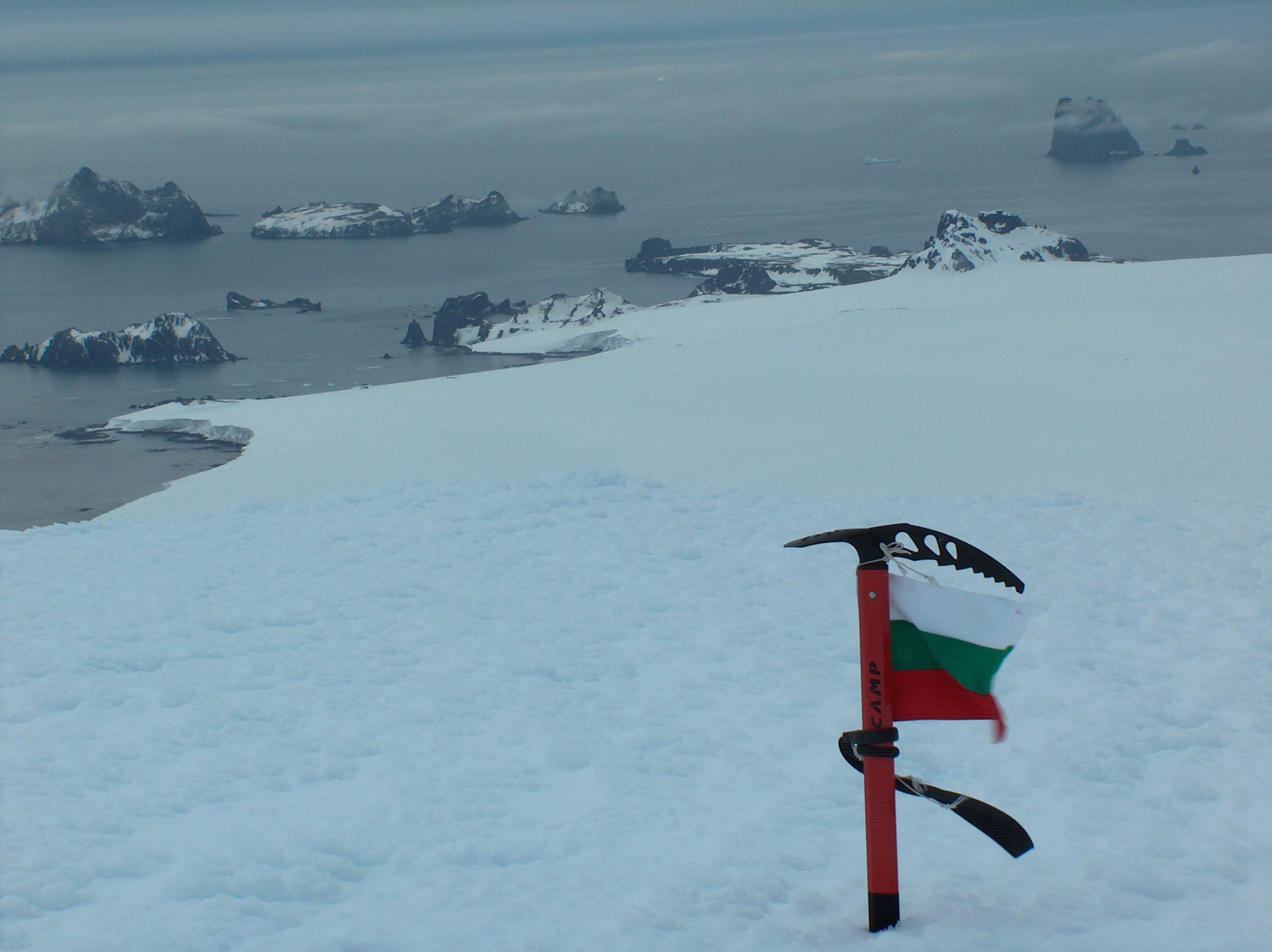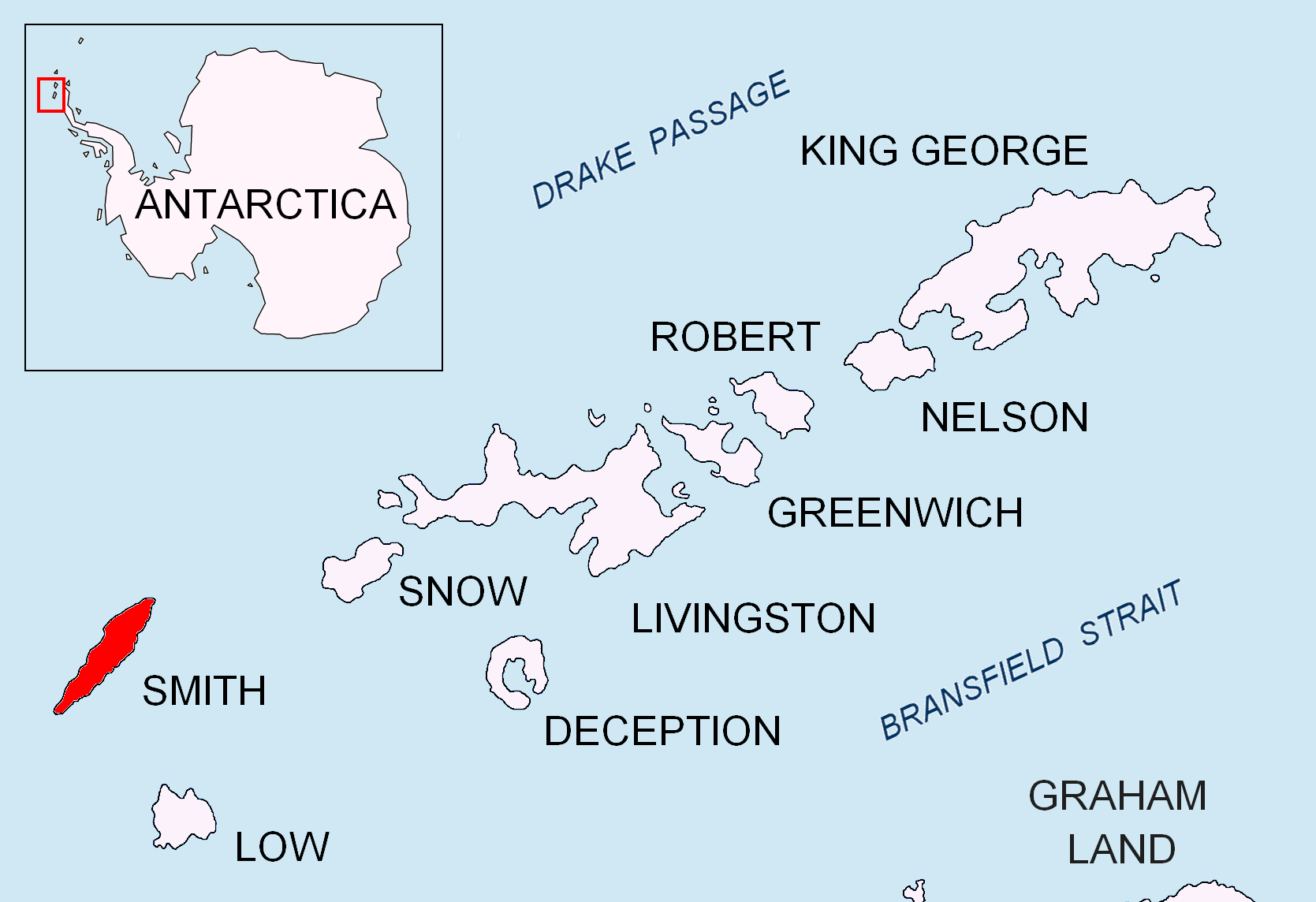|
Byewater Point
Byewater Point is the rocky point forming the northwest extremity of Snow Island (South Shetland Islands), Snow Island in the South Shetland Islands, Antarctica. It is a north entrance point for Boyd Strait. Elysian Beach extends 2 km eastwards from the point. The area was visited by 19th century seal hunting, sealers. The feature was charted and named in 1829 by the British naval expedition under Captain Henry Foster (scientist), Henry Foster. Location The cape is located at which is 10.3 km southwest of Cape Timblón, 10.58 km north-northwest of Cape Conway and 42.8 km east-northeast of Cape Smith, Smith Island (South Shetland Islands), Smith Island (British mapping in 1968, Argentine in 1991, Bulgarian in 2009). Map * L.L. IvanovAntarctica: Livingston Island and Greenwich, Robert, Snow and Smith Islands Scale 1:120000 topographic map. Troyan: Manfred Wörner Foundation, 2009. References SCAR Composite Antarctic Gazetteer Headlands of the South Sh ... [...More Info...] [...Related Items...] OR: [Wikipedia] [Google] [Baidu] |
Snow Island (South Shetland Islands)
Snow Island or Isla Nevada is a completely ice-covered island An island or isle is a piece of land, distinct from a continent, completely surrounded by water. There are continental islands, which were formed by being split from a continent by plate tectonics, and oceanic islands, which have never been ..., in size, lying southwest of Livingston Island in the South Shetland Islands. Surface area is .L.L. IvanovAntarctica: Livingston Island and Greenwich, Robert, Snow and Smith Islands Scale 1:120000 topographic map. Troyan: Manfred Wörner Foundation, 2009. This island was known to both American and British sealers as early as 1820, and the name has been well established in international usage for over 100 years. Maps Chart of South Shetland including Coronation Island, &c.from the exploration of the sloop Dove in the years 1821 and 1822 by George Powell Commander of the same. Scale ca. 1:200000. London: Laurie, 1822 See also * Composite Antarctic Gazetteer * ... [...More Info...] [...Related Items...] OR: [Wikipedia] [Google] [Baidu] |
South Shetland Islands
The South Shetland Islands are a group of List of Antarctic and subantarctic islands, Antarctic islands located in the Drake Passage with a total area of . They lie about north of the Antarctic Peninsula, and between southwest of the nearest point of the South Orkney Islands. By the Antarctic Treaty System, Antarctic Treaty of 1959, the islands' sovereignty is neither recognized nor disputed by the signatories. According to British government language on the topic, "the whole of Antarctica is protected in the interests of peace and science." The islands have been claimed by three countries, beginning with the United Kingdom since 1908 (since 1962 as part of the equally unrecognized British Antarctic Territory). The islands are also claimed by the governments of Chile (since 1940, as part of the Antártica Chilena province), and by Argentina (since 1943, as part of Argentine Antarctica, Tierra del Fuego Province, Argentina, Tierra del Fuego Province). Several countries ... [...More Info...] [...Related Items...] OR: [Wikipedia] [Google] [Baidu] |
Antarctica
Antarctica () is Earth's southernmost and least-populated continent. Situated almost entirely south of the Antarctic Circle and surrounded by the Southern Ocean (also known as the Antarctic Ocean), it contains the geographic South Pole. Antarctica is the fifth-largest continent, being about 40% larger than Europe, and has an area of . Most of Antarctica is covered by the Antarctic ice sheet, with an average thickness of . Antarctica is, on average, the coldest, driest, and windiest of the continents, and it has the highest average elevation. It is mainly a polar desert, with annual Climate of Antarctica#Precipitation, precipitation of over along the coast and far less inland. About 70% of the world's freshwater reserves are frozen in Antarctica, which, if melted, would raise global sea levels by almost . Antarctica holds the record for the Lowest temperature recorded on Earth, lowest measured temperature on Earth, . The coastal regions can reach temperatures over in the ... [...More Info...] [...Related Items...] OR: [Wikipedia] [Google] [Baidu] |
Boyd Strait
Boyd Strait is the wide strait lying between Snow Island and Smith Island in the South Shetland Islands, Antarctica, and linking Drake Passage and the Bransfield Strait. The strait was named in 1823 by a British expedition under James Weddell for Captain David Boyd, Royal Navy. Location Boyd Strait is located at . British mapping in 1823 and 1930-1931. Maps Chart of South Shetland including Coronation Island, &c.from the exploration of the sloop Dove in the years 1821 and 1822 by George Powell Commander of the same. Scale ca. 1:200000. London: Laurie, 1822. * South Shetland Islands : Map 3. Scale 1:200000. Cambridge: British Antarctic Survey, 2008. References Boyd Strait.SCAR Composite Antarctic Gazetteer The Composite Gazetteer of Antarctica (CGA) of the Scientific Committee on Antarctic Research (SCAR) is the authoritative international gazetteer containing all Antarctic toponyms published in national gazetteers, plus basic information about th ... * Bodies ... [...More Info...] [...Related Items...] OR: [Wikipedia] [Google] [Baidu] |
Elysian Beach
Elysian Beach (, ) is the ice-free 2 km long beach on the east side of Byewater Point on the northwest coast of Snow Island in the South Shetland Islands, Antarctica.Elysian Beach. SCAR Composite Gazetteer of Antarctica The area was visited by early 19th century .L. Ivanov General Geography and History of Livingston Island. In: ''Bulgarian Antarctic Research: A Synthesis''. Eds. C. Pimpirev and N. Chipev. Sofia: St. Kliment Ohridski University Press, 2015. pp. 17–28. The feature is named after the ... [...More Info...] [...Related Items...] OR: [Wikipedia] [Google] [Baidu] |
Seal Hunting
Seal hunting, or sealing, is the personal or commercial hunting of Pinniped, seals. Seal hunting is currently practiced in nine countries: Canada, Denmark (in self-governing Greenland only), Russia, the United States (above the Arctic Circle in Alaska), Namibia, Estonia, Norway, Finland and Sweden. Most of the world's seal hunting takes place in Canada and Greenland. The Canadian Fisheries and Oceans Canada, Department of Fisheries and Oceans (DFO) regulates the seal hunt in Canada. It sets quotas (total allowable catch – TAC), monitors the hunt, studies the seal population, works with the Canadian Sealers' Association to train sealers on new regulations, and promotes sealing through its website and spokespeople. The DFO set harvest quotas of over 90,000 seals in 2007; 275,000 in 2008; 280,000 in 2009; and 330,000 in 2010. The actual kills in recent years have been less than the quotas: 82,800 in 2007; 217,800 in 2008; 72,400 in 2009; and 67,000 in 2010. In 2007, Norway repo ... [...More Info...] [...Related Items...] OR: [Wikipedia] [Google] [Baidu] |
Henry Foster (scientist)
Henry Foster (1797 – 5 February 1831) was a Royal Navy, British naval officer and scientist who took part in expeditions to both the Arctic and Antarctic, and made notable scientific contributions to studies of the figure of the earth and the earth's magnetic field. Career Foster was the eldest son of the Rev. Henry Foster of Woodplumpton, Lancashire. He joined the Royal Marines in 1812, serving first aboard . In 1817 he joined in which he surveyed the mouth of the Columbia River. In 1819 he joined HMS ''Creole'', and carried out a survey of the north shore of the Río de la Plata. From 1820-1822 he served on , commanded by Basil Hall, first as midshipman, then as Master's mate, on a yoyage to South America. In his journal of the voyage, Hall refers to Foster as an "admirable surveyor". Foster carried out a survey of the Caldera, Chile, harbour of Copiapó, and prepared a Hydrographical Memoir, with details of all the ports visited on the voyage. During the voyage, Hall and Fo ... [...More Info...] [...Related Items...] OR: [Wikipedia] [Google] [Baidu] |
Cape Timblón
Cape Timblón is the conspicuous rocky cape forming the north extremity of Snow Island in the South Shetland Islands, Antarctica. It is a northwest entrance point for Morton Strait. Linus Beach extends for 2 km on the east side of the cape. The area was visited by 19th century sealers. The feature is named after Captain Carlos Timblón, Master of the Argentine sealing ship ''San Juán Nepomuceno'' that visited the South Shetlands in 1819–20. Location The cape is located at which is 7 km west-northwest of President Head, 10.3 km northeast of Byewater Point, 7.16 km south by west of Benson Point, Rugged Island and 8.39 km southwest of Devils Point, Livingston Island Livingston Island (Russian name ''Smolensk'', ) is an Antarctic island in the Southern Ocean, part of the South Shetland Islands, South Shetlands Archipelago, a group of List of Antarctic and subantarctic islands, Antarctic islands north of the ... (British mapping in 1968, Bulga ... [...More Info...] [...Related Items...] OR: [Wikipedia] [Google] [Baidu] |
Cape Conway
Cape Conway is the rounded low and ice-free tipped cape forming the south extremity of Snow Island in the South Shetland Islands, Antarctica. It is a south entrance point for Boyd Strait. ''Tooth Rock'' () rising to and lying to the south is the largest in a group of rocks extending from the cape. The area was visited by 19th century sealers. Cape Conway was charted in 1829 by the British naval expedition under Captain Henry Foster and named after HMS Conway in which Foster had previously served. Tooth Rock was descriptively named following a survey from ''RRS John Biscoe'' in 1951–52. Location The cape is located at which is south-southeast of Byewater Point, southwest of President Head, southwest of Hall Peninsula and east by north of Cape Smith, Smith Island (British mapping in 1821–22, 1935, 1951-51 and 1968, Argentine in 1946, Chilean in 1974, and Bulgarian in 2009). See also * Composite Antarctic Gazetteer * List of Antarctic islands south of 60� ... [...More Info...] [...Related Items...] OR: [Wikipedia] [Google] [Baidu] |
Cape Smith
Cape Smith is a cape forming the north end of Smith Island in the South Shetland Islands, Antarctica Antarctica () is Earth's southernmost and least-populated continent. Situated almost entirely south of the Antarctic Circle and surrounded by the Southern Ocean (also known as the Antarctic Ocean), it contains the geographic South Pole. .... The discovery of the South Shetland Islands was first reported in 1819 by Captain William Smith, for whom the cape is named. Location The point is located at which is 3.31 km east-northeast of Matochina Peak, 12.85 km east-northeast of Gregory Point, 4.16 km east by north of Delyan Point, 2 km east-southeast of Barlow Island and 40.5 km west-southwest of Snow Island (Bulgarian mapping in 2009). MapsChart of South Shetland including Coronation Island, &c.from the exploration of the sloop Dove in the years 1821 and 1822 by George Powell Commander of the same. Scale ca. 1:200000. London: Laurie, 1822 ... [...More Info...] [...Related Items...] OR: [Wikipedia] [Google] [Baidu] |








